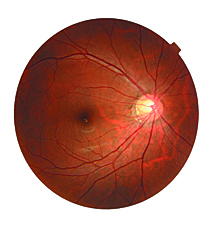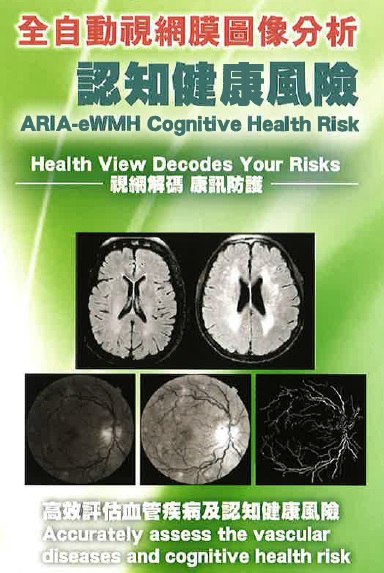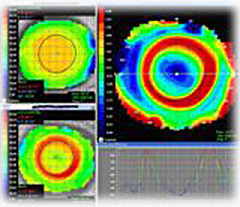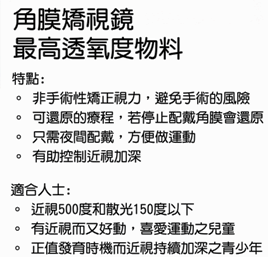Services
All services are personally managed by professional optometrists
Dilated pupils can assist in a more detailed examination and please notice
The pupillary potion will dilate the pupils for several hours, during which time the vision will be blurred and more sensitive to light, especially when looking close up.
- The pupil dilation potion is effective for about 4 – 6 hours, and the check false myopia potion is effective for about 12 hours.
- The potion relaxes accommodation, causing near vision to become blurred.
- The pupils are dilated and more sensitive to light.
- During the potion's effect, it is recommended to avoid outdoor activities or close work, and let the eyes rest.


Orthokeratology (ORTHO-K LENS)
Orthokeratology is a technology that uses contact lenses to change the curvature of the cornea by wearing a set of hard and highly breathable contact lenses with different curvatures and special designs, thereby reducing myopia and astigmatism.
These lenses are mainly worn at night and removed the next day. Due to the elasticity of the cornea itself, when the optimum curvature is achieved, a maintenance lens is still required to maintain the proper curvature of the cornea. Under normal circumstances, people with myopia below 500 degrees and astigmatism below 100 degrees can get better results from orthokeratology. For deep myopia, orthokeratology can be used to reduce part of the degree or control the degree.
To prevent the degree from deepening, some children use orthokeratological contact lenses (OK lenses). In fact, each method of preventing myopia progression has its own risks and side effects. Parents should understand and measure the pros and cons before choosing for their children.
The principle of orthokeratology contact lenses (OK lens) is that people suffering from myopia wear high oxygen permeability keratology contact lenses at night to change the curvature of the cornea, thereby reducing myopia and delaying the progression of myopia, while the degree of myopia decreases during the day. Glasses are not required. Corneal correction is a temporary correction.
Orthokeratology (OK lens) is suitable for children over 6 years old who can handle orthopedic lenses and myopia less than 500 degrees. Wear high oxygen permeability rigid contact lenses every night to gradually change the corneal curvature. It is not necessary to wear it during the day. It has been proved that it can effectively delay the progression of myopia, but the effect of individual delaying is different.
In addition, children should cooperate to control myopia, including
1. Develop good reading habits and avoid reading for a long time
2. Let the eyes have a proper amount of far-sighted rest
3. Increase outdoor activities: proper amount of sunlight can control myopia


Children at the age of three can have their first detailed optometry examination to detect eye problems early and make corrections.
Children's Visual Development Stages:
| 1-month | start tracking movement |
| 6-month | hand-eye coordination |
| 1-2 year old | Flexible hand-eye coordination, can focus and recognize depth, can be paired, and recognize shapes |
| 3-4 year old | Chasing movement, binocular coordination, precise hand-eye coordination, depth and three-dimensional perception, visual acuity about 20/30 |
| 5-6 year old | Visual development is similar to that of adults. If symptoms of strabismus or amblyopia are detected early and receive appropriate treatment, the situation will be significantly improved. |


Related Reports 1
Related Reports 2
Taking pictures of both eyes to measure the risk of dementia
Following the detection of ARIA stroke risk index, the center has once again been authorized by the Chinese University of Hong Kong to use its newly developed (ARIA-eWMH Cognitive Health Risk, ARIA Cognitive Health Risk Screening) platform to provide cognitive health risk screening services in cooperation. In recent years, the public has paid more and more attention to dementia, but it is difficult for ordinary people to distinguish between normal human aging and brain function decline caused by brain neurocytopathy. Our center provides "Automatic Retinal Image Analysis - Cognitive Health Risk Assessment ”; the assessment is by taking retinal fundus images of both eyes, observing the retina and its tiny blood vessels, and knowing how many white matter lesions there are, and then calculating the risk of dementia. The whole process only takes about 15 minutes. The detection accuracy is 90%, and it provides services for people aged 40 or above who have no symptoms of dementia or who have dementia and are willing to improve their lifestyle.
What is Dementia ?
Cognitive impairment, known as Alzheimer's disease in the early years, is a disease in which brain function declines due to brain neurocytopathy. The etiology can be divided into three categories:
1. Alzheimer's disease - the cause is unknown, it may be related to genetics.
2. Vascular dementia – caused by brain damage caused by multiple minor strokes.
3. Other conditions that may cause symptoms of dementia in patients - hydrocephalus, brain infection, hypothyroidism, drug poisoning and depression, etc.
Due to the disease of the brain nerve cells of the patient, the brain function declines, and the patient's memory, comprehension, language, learning, calculation and judgment will be affected, and there will be some changes in emotion, behavior and feeling. Generally, the first impact is memory. Although there is currently no cure for dementia, active management can modify risk factors and delay or delay the onset or progression of dementia. Because of the treatment and care of dementia and patients, not only the patients need to cooperate with the care, but also their family members need to face the heavy pressure in economic, emotional and life. Early detection and appropriate treatment can slow down the degeneration, reduce the impact of symptoms on the family, and maintain a certain quality of life. According to a study in 2005/06, about 9.3% of the elderly over 70 years old in Hong Kong suffer from dementia, and the prevalence rate of women (15.3%) is higher than that of men (8.9%).
ARIA Cognitive Health Risk Screening (ARIA-eWMH )
The basic operation of ARIA-eWMH and the requirements for capturing images of retinal images are the same as those of ARIA-Stroke Risk. In order to maintain the reliability of retinal images, optometrists will first conduct a comprehensive eye health examination for patients. Confirm that the eyes are healthy and normal, and then capture retinal images under the condition of dilated pupils. This kind of inspection and the quality of the captured images can be guaranteed, which can be used to analyze and evaluate the risk of dementia for patients, and the accuracy It can be as high as more than 90%.
Who is suitable for ARIA-eWMH ARIA Cognitive Health Risk Screening
1. 40 years old or above
2. No history of stroke and/or minor stroke
3. Not diagnosed with cognitive impairment or mild cognitive impairment
4. Clear retinal image
The operation of the ARIA retinal image analysis system is relatively simple, and the only requirement is to capture clear and consistent retinal images. The examination is non-invasive, and the continuous examination will not affect the eyes. It can also be used as a random examination, without time or geographical restrictions; without radiation, without blood draw, and the examination results will not be affected by age, expressive ability, education level Or cultural differences are affected! The fee is relatively cheap. The function of the ARIA retinal image analysis system is risk assessment, which cannot diagnose diseases. If users know that they are high-risk individuals, they can do further examinations or change their bad living habits, so as to prescribe the right medicine, establish a healthy lifestyle, and reduce the impact of diseases. impact on quality of life.
 |  |
SEC reserves the right to make the final decision.
Cognitive Health Risk level is not intended for disease diagnosis or therapeutic purposes. It is not intended to replace regular eye examinations or medical examination. The information on Stroke Risk Level is provided to the clients for health promotion ONLY and use as a reference. It is neither intended nor implied to be a substitute for professional medical advice. Always seek the advice of medical professionals or other qualified healthcare providers prior to starting any new treatment or address questions your clients may have regarding a medical condition.
Stroke is called the "invisible killer". When it occurs, there are few precursors and low warning. Once it occurs, it will cause many sequelae, and the fatality rate is very high. If some signs can be found in advance, the tragedy may be avoided. In recent years, the number of stroke patients in Hong Kong is increasing and the patients tend to be younger. However, after the onset of stroke, there is still no definite and effective direct treatment method, so the importance of stroke prevention can be seen even more.
In the past, to assess a person's risk of stroke, in addition to looking at clinical symptoms, the doctor would also check the electrocardiogram to rule out the simultaneous occurrence of myocardial infarction, and then conduct a deep physical examination, mainly using magnetic resonance imaging (MRI), or computer scan (CT Scan), Carotid ultrasound and intracranial ultrasound, but patients generally need to consider the cost of examination (see the picture below) and examination time.
[Xinglin Online] Retinal blood vessel detection stroke risk 2017-01-09
However, the new fully automatic retinal image analysis system is relatively simple, fast, accurate, economical and highly accurate.
A fundus photograph to assess the risk of stroke
Stroke is the fourth leading cause of death in Hong Kong, and both diabetic retinopathy and hypertensive retinopathy are related to stroke. Retinal blood vessels are the only blood vessels that can be directly seen with the naked eye. They have the same embryonic origin as cerebrovascular, and their tissue structure is related to pathological changes caused by diabetes and hypertension. If people at risk of stroke are detected early, it will be of great help to improve protection and treatment.
Common Symptoms of Stroke
Stroke patients usually do not have any symptoms beforehand, but the following symptoms will appear suddenly when the attack occurs:
• Sudden brief numbness and/or trembling of an arm, foot, or half of the eyelid
• Slurred or difficult speech
• Blurred vision or difficulty seeing in one eye
• Unexplained severe head pain
• Unsteadiness or falls are sudden acute symptoms. Delay in diagnosis and treatment can have serious consequences and reduce the chance of recovery.
Stroke risk at a glance with 94% accuracy
At present, the ARIA technology "Automatic Retinal Image Analysis System" developed by Chinese University has obtained a US patent. It is simpler, faster, more accurate and economical to predict the risk of stroke, with an accuracy of 94%.
Image analysis only needs to decompose the pixels of each point through a "fundus phase" retinal image, and evaluate the overall cerebrovascular status, including whether there are characteristics such as narrowing, hemorrhage, obstruction, or special curling and abnormal bifurcation angles ( Coronary heart disease, high blood pressure, and diabetes patients are especially common symptoms), thus providing a medium and low chance of stroke risk, especially helpful for patients with diabetes, high blood pressure, heart disease and fear of blood drawing. Thereby early treatment, the disease tends to shallow Chinese medicine. The only restriction is that the examinee cannot have cataracts.
common problem
Q1: Who developed the "Automatic retinal image analysis system"?
A1: "Automatic retinal image analysis system" was developed by the Chinese University of Hong Kong.
Q2: Does the "Automatic Retinal Image Analysis System" have patent rights?
A2: "Automatic retinal image analysis system" applied for a patent in the United States in April 2012 and was approved in July 2014. Obtained a patent in Taiwan, China in 2017.
Q3: Will there be any side effects in stroke risk screening?
A3: Stroke risk screening is a non-invasive test with no side effects.
Q4: Is it expensive to perform stroke risk screening?
A4: The price of stroke risk screening is popularized.
Q5: How long does it take for a stroke risk screening to be available?
A5: Generally speaking, the report can be provided within 15 minutes.
Q6: What factors can be controlled in the follow-up risk control principles of stroke?
A6: What are the factors that can be controlled in the follow-up risk control principles of stroke:
● diabetes
● high blood pressure
● high cholesterol
● Irregular heart rhythm
● Obesity
● Lack of exercise
● pressure
● smoking
● alcoholism
SEC reserves the right to make the final decision.
Disclaimer: This analytical report is intended to promote health and is not a substitute for professional medical advice. Before receiving any treatment, or if you have any questions about treatment, please consult a professional healthcare professional.


